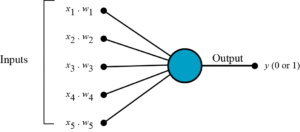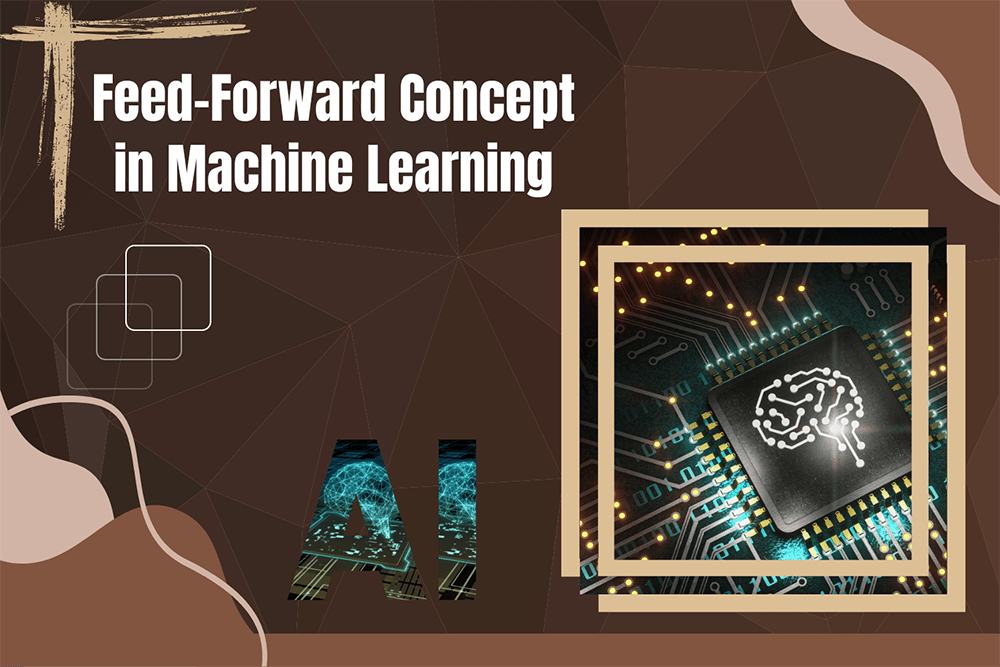A Feed-Forward Neural Network is a single layer perceptron in its most basic form. In this article, what is Feed-Forward concept in machine learning is discussed.
Firstly, lets understand what Neural networks are:
Artificial neural networks are inspired by biological neurons within the human body, which activate under particular conditions, resulting in the body performing a relevant action in response. Artificial neural nets are made up of several layers of linked artificial neurons that are driven by activation functions that allow them to be turned on and off. There are specific values that neural nets learn in the training process, much like classic machine algorithms.
In a nutshell, each neuron receives a multiplied version of inputs and random weights, which is then added with a static bias value (unique to each neuron layer), which is then sent to a suitable activation function, which determines the final value to be output from the neuron. Depending on the nature of the input values, multiple activation functions are possible. Once the final neural net layer’s output is created, the loss function (input versus output) is determined and backpropagation is attempted to minimize the loss. The whole procedure is centered on determining ideal weight values.
Weights are numerical numbers multiplied by inputs. They are adjusted in backpropagation to decrease loss. Weights are just machine-learned values from Neural Networks. They self-adjust based on the gap between expected and training outcomes.
The Activation Function is a mathematical function that assists the neuron in switching ON/OFF.
- The input layer represents the input vector’s dimensions.
- The intermediary nodes that split the input space into areas with (soft) borders are represented by the hidden layer. It receives a collection of weighted input and generates output using an activation function.
- The output layer represents the neural network’s output.
Feed-Forward Neural Networks:
The most basic type of neural network, in which input data flows in just one way, passing through artificial neural nodes and exiting through output nodes. In areas where hidden layers may or may not exist, input and output layers are present. They are further classed as a single-layered or multi-layered feed-forward neural network based on this.
A Feed-Forward Neural Network is a single layer perceptron in its most basic form. In this model, a series of inputs enter the layer and are multiplied by the weights. The total is formed by adding the weighted input values together. If the total of the values is more than a specified threshold, which is often set at zero, the output value is typically 1, and if the sum is less than the threshold, the output value is typically -1. The single-layer perceptron is a widely used feed-forward neural network model for classification. Machine learning characteristics may also be found in single-layer perceptron.

Characteristics of Feed-Forward Neural Networks:
- Layers of perceptron are used, with the first layer receiving inputs and the last layer providing outputs. Because the intermediate layers have no link to the outside world, they are referred to as hidden layers.
- Each perceptron in one layer is linked to every perceptron in the following layer. As a result, information is continually “fed forward” from one layer to the next, explaining why these networks are known as feed-forward networks.
- No connections exist between perceptron in the same layer.
Cost Function:
A feedforward neural network’s cost function is an essential consideration. Minor changes to weights and biases, in general, have minimal influence on the classified data points. Thus, using a smooth cost function, identify a way for enhancing performance by making tiny tweaks to weights and biases.

Where,
w = weights collected in the network
b = biases
n = number of training inputs
a = output vectors
x = input
‖v‖ = usual length of vector v
How does a Feed-Forward Neural Network work?
Data is sent through the mesh of the neural network. Each layer of the network functions as a filter, removing outliers and other known components before generating the final output.
Step 1: A collection of inputs is introduced into the network through the input layer and multiplied by their weights.
Step 2: Each value is added together to get a total of the weighted inputs. If the total value exceeds the stated limit (which is normally 0), the result is usually 1. If the value goes below the stated limit, the outcome will be -1.
Step 3: For categorization, a single-layer perceptron employs machine learning ideas. It is an important feedforward neural network model.
Step 4: Using the delta rule, the neural network’s outputs may then be compared to their expected values, allowing the network to adjust its weights during training to acquire more accurate output values. This training and learning process results in a gradient descent.
Step 5: Backpropagation is the term used to describe updating weights in multi-layered networks. Each concealed layer is changed here to remain in sync with the final layer’s output value.
Applications of Feed-Forward Networks:
While Feed Forward Neural Networks are very simple, their reduced design might be advantageous in some machine learning applications. For example, one may put up a sequence of feed forward neural networks with the purpose of operating them independently but with a modest intermediate for moderating. This mechanism, like the human brain, relies on numerous individual neurons to handle and process bigger tasks. Because the different networks complete their duties individually, the findings may be integrated at the end to provide a synthesized and coherent output.
Advantages of Feed-Forward Neural Networks:
- Less complicated, simpler to create and manage
- One-way propagation due to which they are Quick and efficient
- Extremely sensitive to noisy data
Disadvantages of Feed-Forward Neural Networks:
- Due of the lack of thick layers and back propagation, it cannot be utilized for deep learning.


